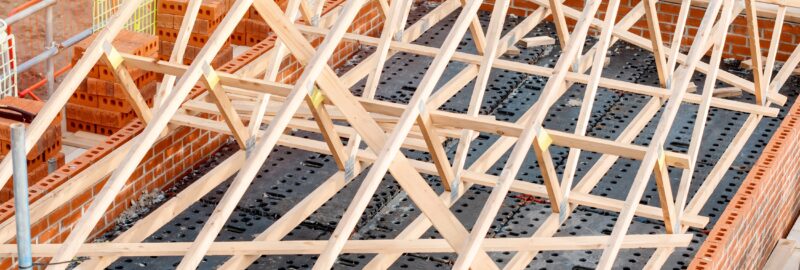
Needs Improvement: Tribunal Quashes Deficient Improvement Notice
29th November 2023
Manaquel Company Limited v The London Borough of Lambeth, LON/00AY/HIN/2021/0021
Nick Isaac KC and Richard Miller, instructed by Comptons Solicitors LLP, acted for the successful Appellant in an appeal against an improvement notice pursuant to paragraphs 10 to 12 of Schedule 1 to the Housing Act 2004 (“the 2004 Act”).
Chapters 1 and 2 of the 2004 Act establish a system for the assessment and enforcement of housing standards, by which local authorities are required or empowered to take action (including serving hazard awareness, improvement, or prohibition notices) where they identify category 1 and category 2 hazards in residential premises.
The formula for calculating the bands of hazard is contained in regulation 6 of the Housing Health and Safety Rating System (England) Regulations 2005 (“the 2005 Regulations”) and involves subjective assessment of the likelihood of harm arising and the class of that harm. There are four classes of harm, ranging from death and extreme harm on one end to moderate harm at the other.
An improvement notice requires the person served to take specified remedial action in respect of the hazards. Failure to comply with an improvement notice is a criminal offence.
The Appellant was the owner of an estate comprising eight blocks and ninety-six flats. Following inspections in early 2021, the London Borough of Lambeth purported to identify hazards relating to excess cold, excess heat, and hot surfaces and materials, and served an improvement notice requiring extensive remedial works to eliminate category 1 and 2 hazards, including wholesale replacement of the windows in the estate and works to the heating system.
The Appellant appealed the improvement notice on the basis that the hazards did not exist as alleged, that planning permission for extensive works which would eliminate the hazards was currently being sought, and that the notice was deficient for not specifying which of the windows required replacement, in circumstances in which plenty were functioning perfectly well.
At the time of the appeal almost two years later, the Appellant argued that many of the remediation works had already taken place and hazards reduced or eliminated. The Respondent accepted this to an extent for the excess heat and hot surfaces hazards, and the case therefore focused on excess cold. The Respondent argued that, despite the lack of an inspection prior to the hearing, the hazard remained, that the notice’s breadth was “sensible and proportionate” given the number of windows, and that the Appellant could read the same “in a common-sense way”.
The First-Tier Tribunal accepted the Appellant’s arguments about the deficiencies of the improvement notice, finding that the same “is not nearly specific enough” and “it is not at all clear from the Improvement Notice which flats are being referred to”. The Respondent’s contention that the failure to specify the flats and the windows in the notice was “sensible and proportionate” was rejected, with the Tribunal stating:
“… such an approach is not at all sensible in the context of the service of an improvement notice. The Respondent has served an improvement notice on a property owner requiring it to spend substantial time and money carrying out works, in circumstances where a failure to comply with the improvement notice (if valid) constitutes a criminal offence and is subject to financial sanctions. The recipient of an improvement notice must be able to understand from that notice which specific parts of the property need fixing in order to remedy the hazards specified in the notice. And even where an improvement notice is detailed enough so that one can understand which specific parts of the property are said to need fixing, on an appeal the local housing authority must be able to satisfy the tribunal that the hazard scoring and the list of required works has a proper and sufficient evidential basis.”
The Tribunal also noted that the improvement notice was internally inconsistent. A local housing authority is required to justify their decision to serve an improvement notice rather than opt for one of the alternative courses of action. The Respondent had recorded in the improvement notice that the reason for not serving a prohibition notice was that “there is not an imminent risk of serious harm to the health and safety of the occupants”. However, their hazard calculation involved an assessment that there was a 1 in 177 chance of a relevant occupier suffering death or extreme harm in the next twelve months, which could not be reconciled with that statement.
The Tribunal therefore quashed the notice in its entirety.
The decision provides useful exposition as to the sort of evidence needed to demonstrate the existence and severity of hazards under the 2005 Regulations. Questions of repair, efficiency, or improvement are not strictly relevant; the exercise focuses on harm. The nature of the calculation in the 2005 Regulations, which weights classes of hazard on a broadly logarithmic scale, means that the existence of a risk of death or extreme harm will usually be the deciding factor in pushing a hazard from category 2 to category 1 and in justifying the service of an improvement notice over a less invasive option. Local authorities therefore need to understand the statistical underpinning of the system to soundly justify their decision, and property owners served with a notice should make requesting and examining the calculation a priority should they wish to appeal.
A copy of the decision can be found here.
This article was first published by Practical Law here.
Disclaimer
This content is provided free of charge for information purposes only. It does not constitute legal advice and should not be relied on as such. No responsibility for the accuracy and/ or correctness of the information and commentary set out in the article, or for any consequences of relying on it, is assumed or accepted by any member of Chambers or by Chambers as a whole.
